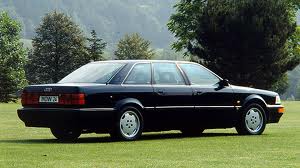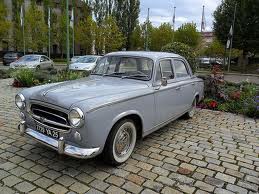


This edition of the Porsche Boxster 3.2 S 260 is the 6 speed / Manual version and was first brought out in 1999. This was at around the same time as the introduction of the and the .This particular Porsche Boxster has a 3179cc Naturally Aspirated Petrol powerplant with 6 cylinders in a F formation.
The Boxster shares its Petrol F6 engine configuration with the likes of the 2017 Porsche 911 GT2 RS and the 2016 Porsche 911 Turbo S 991 II. If you're looking for other fast cars which share the Boxster's Rear Wheel Drive, Cabriolet combination then how about the 1982 Fiat X1/9 1.5 8V or the 1965 Aston-Martin DB6 1965.
Weighing in at 1320 kgs (2910 lbs) this makes the Porsche Boxster 3.2 S 260 in the same weight category as the 2020 McLaren 765LT 4.0 V8 Twin Turbo or the give or take 50kg.
In terms of power the 3179cc 24V F6 engine produces 260 bhp (193 kW) @ 6200 rpm similar to the 2022 Hyundai i30 N Performance 2.0 Turbo (276 bhp) or the 2021 Ford Mustang Mach-E AWD (266 bhp).
The Naturally Aspirated F6 throws out 228 lb-ft (309.1 Nm) @ 4700 rpm placing it with cars of similar torque performance figures such as the 2022 Mini Cooper John Cooper Works Cabrio 2.0 Turbo (236 lb-ft) or the 2020 McLaren Sabre 4.0 V8 Twin Turbo (206 lb-ft).
If one combines the weight with power or torque performance for the Porsche Boxster you can get a better idea of it's real world performance.
The Porsche Boxster has a Power to weight ratio of 196.9 bhp per ton and 172.7 lb-ft per ton. Bhp Per Ton figures of the 1999 Boxster competing with the 1992 TVR Chimaera 4.0 (221.6 bhp per ton) or the 2015 Honda Civic Type R 2.0i 16v Turbo - FK2 (221.4 bhp per ton).
If you agree with the late great Carroll Shelby then arguably an even better indicator of potential performance, Torque. Use weight as well and you end up with - Torque per ton, with the Porsche Boxster generating around 172.7 lb-ft per ton. If you're curious as to what other cars have as much torque to weight then look no further than the 1963 Ferrari 275 GTB 3.3 V12 (197.6 lb-ft per ton) or the 2020 Lotus Elise Cup 250 1.8 Supercharged (197.6 lb-ft per ton).
With a 0-60mph time of 5.50 secs or a 0-100km/h (0-62mph) of 5.7 secs, this made the Porsche Boxster 3.2 S 260 as fast as the 2019 Ford Focus ST 2.3 EcoBoost (5.50 secs) the 2017 Honda Civic Type R 2.0i 16v Turbo - FK8 (5.50 secs) the 2017 Seat Leon SC Cupra 300 (5.50 secs) the or the 2017 Seat Leon Cupra 300 DSG (5.50 secs). This Porsche Boxster 3.2 S 260 is also faster than the 2022 Volkswagen-VW Arteon 2.0T AWD (5.60 secs) the 2022 Volkswagen-VW Arteon 2.0T (5.60 secs) the 2020 Maserati Ghibli GranSport Petrol Hybrid (5.60 secs) the and the 2019 Tesla Model 3 Standard Range (5.60 secs).
When talking about the performance of the Porsche Boxster on the drag strip it can reach a quarter mile in an estimated 14.07 secs @ 97.2 mph. Similar performance down the quarter mile can be found with the the 2003 Ford Mustang Mach 1 (14.01 secs), the 2006 Subaru Forester STi 2.5L Turbo (14.01 secs), and the 2007 BMW 1 Series 135i 2d Coupe M-Sport (14.05 secs).
Modern performance cars are often artificially restricted to 155mph. The 1999 version of the Porsche Boxster 3.2 S 260 has a maximum speed of 164mph.
If maxing out your car on the AutoBahn is your thing and you're wondering what's faster than the 1999 Porsche Boxster 3.2 S 260 then how about the 2017 Dodge Charger SRT 392 (175 mph), the 2014 Porsche Boxster GTS (175 mph), or the 2014 Porsche 911 Targa 4 991 (175 mph).










Audi Q7 6.0 V12 TDi Quattro
Engine: Twin Turbo Diesel | 5934cc 48v V12
Top Speed: 155 mph
0-60mph: 5.40 seconds

Peugeot 403 1500
Engine: Naturally Aspirated Petrol | 1468cc 8v St4
Top Speed: 122.3 kph
0-100kph: 24.8 seconds



















